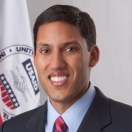
This week more than 2,000 government, civil society and private sector leaders have gathered in Busan, South Korea with one goal: to improve the quality and effectiveness of development aid.
The setting is especially significant; 50 years ago, South Korea was largely a country of peasant farmers. It was poorer than North Korea and than two-thirds of the countries in sub-Saharan Africa and its people barely lived past the age of 54.
Today, South Korea is a high-tech hub, an emerging donor and its people have some of the longest life expectancies in the world. South Korea also happens to be the seventh largest market for American goods; we sell more to the South Koreans than we do to the French. The free trade agreement President Obama recently signed with South Korea means we’ll be selling even more to Seoul in the future, leading to high-paying American jobs.
South Korea’s economic miracle—from one of the poorest countries in the world to one of the most advanced —serves as a powerful example of how effective foreign assistance can be, if delivered well and used wisely to catalyze growth. With a focus on transparency, mutual accountability, strong private sector engagement and meaningful results, development assistance can help developing countries thrive.
President Obama, Secretary Clinton, CEO Yohannes, and I have worked hard to reform the way America delivers assistance abroad. As part of our nation’s first ever Presidential Policy Directive on Global Development, we’ve made our assistance more transparent, accountable and effective.
We created foreignassistance.gov— an online dashboard that anyone can use to track American foreign assistance investments. We launched a major effort to deliver our aid directly to the people we intend to help, rather than routing it through middlemen and contractors. And we launched the Open Government Partnership, a new multilateral initiative through which governments—including the U.S.—make concrete commitments to promote transparency, empower citizens, fight corruption and use new technologies to strengthen governance.
But America will do even more to ensure our development assistance is delivered transparently and accountably. Yesterday in Busan, Secretary Clinton announced a major step forward for development transparency: the United States—the world’s largest donor of foreign assistance—will join the International Aid Transparency Initiative. This takes our standard of transparency to a new level, committing ourselves to publish up-to-date information in a common, open format that makes it easy for anyone around the world to find, use, and compare information about our aid spending.
From keeping the development pledges we made at the Gleneagles donor summit, to delivering major reforms to our aid through an effort called USAID Forward, to launching a global food security initiative called Feed the Future that will lift 18 million people out of hunger and poverty, the United States has shown its commitment to be a modern, global leader in international development.
But delivering effective aid is a two-way street – it also requires leadership from our partners. That’s why we will also strengthen our partnerships with foreign governments that show commitments to economic reform and democratic governance. The U.S. continues to work with its partners to strengthen our impact and bring real and tangible benefits to the poorest around the world. We are emphasizing mutual accountability for results.
As part of the President Obama’s Presidential Policy Directive on Global Development, we launched an effort called Partnership for Growth emphasizing that American engagement — if matched by mutual commitments by partner governments—could help catalyze growth in countries best positioned for economic success. We’ve worked in close partnership with the governments of El Salvador, Ghana, the Philippines and Tanzania to conduct joint analysis of their constraints to growth and develop joint action plans to help break down those barriers.
Finally, we will expand our partnership with the private sector, as part of our continuing and sustained efforts to make American taxpayer dollars go further. A cornerstone of this effort is forming new, high impact public-private partnerships—working and investing together to build new markets, unlock opportunity and deliver meaningful results. We must support the work of markets that can deliver profits, create jobs and deliver economic opportunity for women, minorities and the poor.
But ultimately, we are in Busan to listen and learn. The U.S. continues to reform our development work, and what we learn from our development partners helps improve our ability to deliver impact. South Korea’s experience has taught us much about effective foreign aid. We have just as much to learn from the rest of the world.


